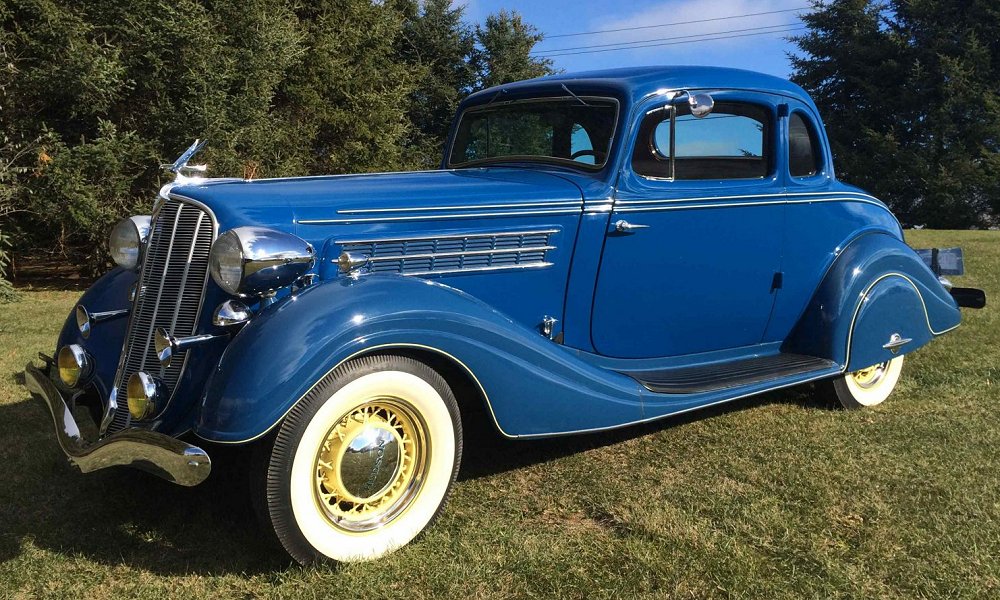Description
The Hudson Eight Coupe was a quintessential example of early 1930s American motoring elegance, combining Hudson’s advanced engineering with graceful design and smooth, effortless performance. Built during a period when the company was at the height of its technical confidence, the Eight Coupe represented a perfect balance between refinement, reliability, and understated power—qualities that helped Hudson maintain a strong reputation even through the economic turbulence of the Great Depression.
Introduced in 1930 as part of Hudson’s expanding Eight-cylinder lineup, the Coupe was powered by a robust inline eight-cylinder engine that set it apart from many rivals still relying on sixes. The straight-eight engine, with a displacement of around 4.2 litres (254 cubic inches), produced roughly 92 horsepower. While that might seem modest by later standards, it offered smooth, vibration-free power delivery thanks to Hudson’s precision-balanced crankshaft and advanced lubrication system. This engine made the Hudson Eight Coupe not only a quiet and refined touring car but also one of the more responsive and confident performers of its time.
The chassis featured a solid steel ladder frame construction—strong yet relatively light—and was supported by semi-elliptic leaf springs and hydraulic shock absorbers. Steering was mechanical but well-geared, providing both stability at speed and manageable control in town. Hudson’s mechanical brakes were among the best in the industry before hydraulic systems became widespread, offering reliable stopping power. Together, these components gave the Eight Coupe a secure, composed feel on the road and allowed for smooth cruising at highway speeds, a quality not all cars of its era could claim.
Stylistically, the Hudson Eight Coupe reflected the restrained elegance of early 1930s automotive design. The long bonnet, upright grille, and sweeping front fenders conveyed an impression of dignity and strength, while the gently sloping roofline and neatly tapered rear deck gave the car an athletic, well-balanced stance. Chrome accents adorned the radiator shell, door handles, and light housings, adding a touch of sophistication without excess ornamentation. Wire-spoke wheels, dual side-mounted spare tyres, and a rumble seat at the rear (on certain models) were popular options, highlighting the blend of practicality and style that characterized Hudson’s approach.
Inside, the Hudson Eight Coupe offered a cabin that combined luxury with craftsmanship. The interior was finished in quality materials such as mohair or leather upholstery, complemented by polished wood trim and elegant instrumentation. The dashboard was neatly arranged, featuring large circular gauges for speed, oil pressure, fuel, and temperature. The seating was comfortable and generously proportioned, making the Coupe suitable for both city driving and long-distance touring. Hudson’s reputation for attention to detail was evident in the fit and finish—quiet operation, solid door closures, and an overall sense of precision engineering.
The Eight Coupe appealed to buyers who wanted the refinement and power of a luxury car without the extravagant price tag of a Packard, Lincoln, or Cadillac. Hudson positioned it as a car for professionals and enthusiasts who valued performance and craftsmanship over sheer prestige. Advertising at the time emphasized the car’s smoothness, durability, and economy, with slogans such as “The Eight that Out-Values the Rest.”
Despite the economic hardship of the early 1930s, the Hudson Eight series sold well and helped sustain the company during the Depression. It became known for its reliability—many owners reported hundreds of thousands of miles with minimal mechanical trouble—and for its smooth, almost effortless driving experience. The Coupe body style in particular struck a chord with buyers who preferred a sportier, more personal car than a sedan but still wanted refinement and comfort.
Over time, the Hudson Eight evolved in both styling and mechanical sophistication. By 1933, streamlined grilles, lower rooflines, and art deco detailing reflected broader trends in design, while continuous mechanical improvements kept the car competitive. The Eight engine remained a core part of Hudson’s identity well into the late 1930s, known for its balance, flexibility, and quiet operation.
Today, the Hudson Eight Coupe is regarded as one of the finest examples of prewar American craftsmanship. Surviving models are admired for their smooth-running straight-eight engines, solid construction, and timeless proportions. They capture a moment when Hudson was producing cars that rivalled the best in America—vehicles built not for excess, but for enduring quality and elegance.
The Hudson Eight Coupe stands as a reminder of a golden age in American motoring, when engineering excellence and restrained design met to create cars of genuine character. It reflected Hudson’s philosophy of “luxury through precision” and remains a cherished classic for those who appreciate the artistry and mechanical honesty of early 20th-century automobiles.
